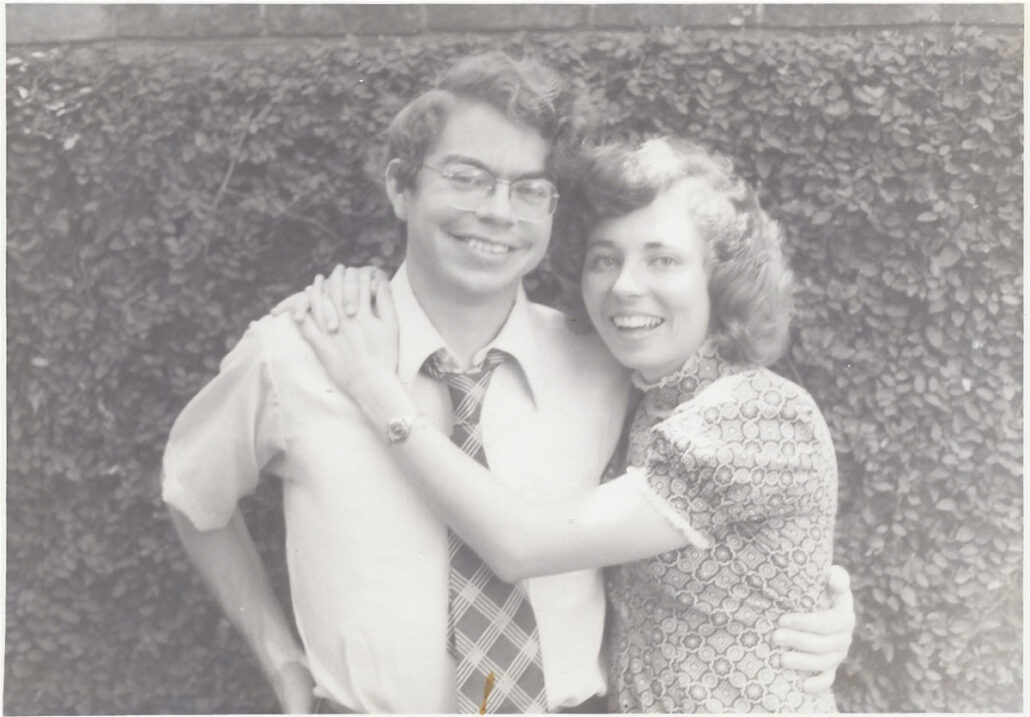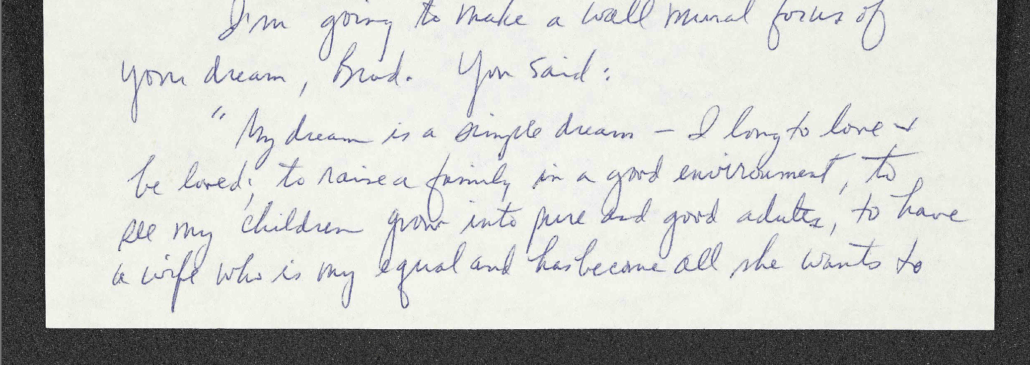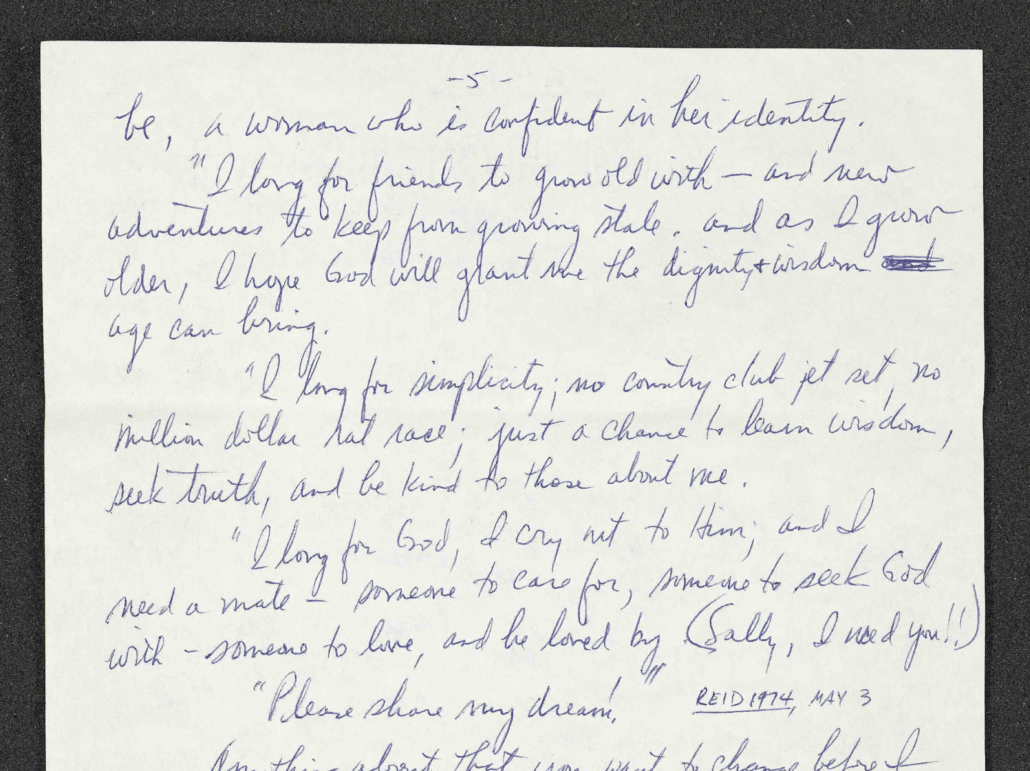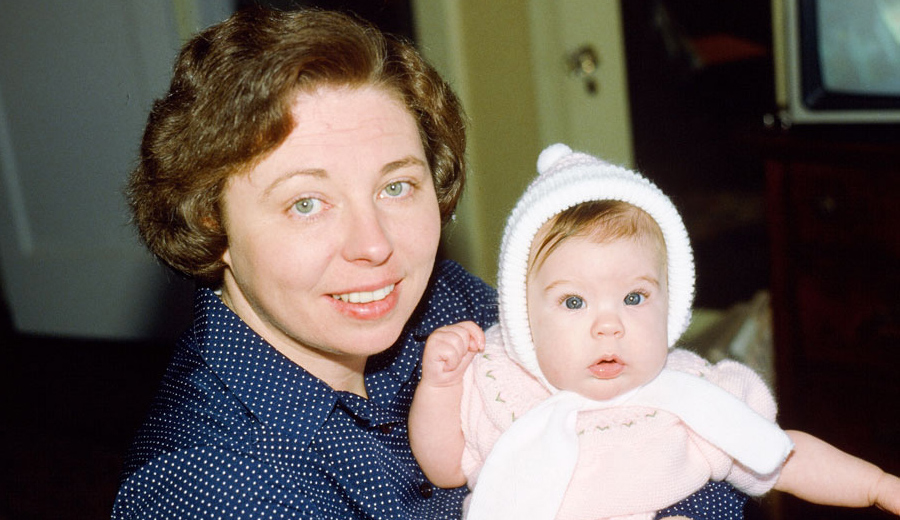Sally Johnston Reid with baby Sarah.
Image provided by Sarah Gibson and used with permission.
In Part 1 of our interview with Sarah Gibson, we discussed finding a digitization solution that takes a different approach. In Part 2, we cover how that approach enhanced Sarah’s experience with the collection, and how digitized collections can facilitate connection, gather memories, and even drive healing.
Interview with Sarah Gibson, Continued
The Journey of Healing
Sarah Gibson: When my mom passed away, that was really hard. I, as a filmmaker, I’m still trying to process that. My goal is to ultimately make a documentary about my mother and about generational stories we tell ourselves.
But I needed to really understand. I can’t ask her things. I’m trying to process the relationship of her as a mother and me as a daughter, and at the same time, me as a mother with my daughter, and what that looks like. But I needed to first understand the relationship she had with her mother.
Marcia Spicer, Client Executive: Reading through the collection, did you find the story between mother and daughter that you were looking for?
Sarah: It seems like my grandmother is just writing about things that are happening, but I think that does play into the film I want to make, because the film is about my mother. She and I loved each other deeply, but we could not communicate with each other.
It’s not like we were estranged, but when she passed away… Her death was very sudden. Prior to her death, she had agreed to go to family counseling with me, and we would work on our relationship. When I said one thing, she heard another. We could not communicate with each other.
We cared about different things, and the words we were using were being read through different filters. As a child that was pretty hurtful, but as an adult, you want your mother. You want to heal that relationship.
When she died, it meant the question was, “Can you heal a relationship when the person is no longer living?”
I think what I’m learning is that you can.
It comes through the context of understanding, and the letters themselves help me understand her. I think the relationship between her and her mother was the same way. Her mother did not understand her. Her mother did not see her for fully what she wanted to be.
I am a mother now, and my daughter is a carbon copy of me. I understand her too much because we are exactly alike, whereas my mom and I were not exactly alike… but that means there are times when my daughter says something to me, and I can see myself saying that to my mother and my response to her is the exact same as my mother to me, and I stop in my tracks. Oh, my goodness. The way that was said to me was not meant to hurt me. I didn’t understand the full picture.
I can break that cycle and tell my 9-year-old daughter I’m going to make mistakes. I’m going to say things to you that are going to hurt your feelings, but I never want to hurt your feelings. Your thoughts and feelings are valid.
But my mother, my grandmother, in the letters, isn’t saying things to her that are earth shattering, but I think that says a lot. Sally would go to her mother all the time, I know she would. She would be vulnerable, and her mother would say “I just don’t get you, and I don’t get the way in which you want to live. And I don’t get the way your family is.”
Can you heal a relationship after the person’s dead, when you have the right context? I think you can, and it comes with understanding the person and where they were coming from, and the empathy that you might not have ever gotten to in person.
I look back on pictures and think, my mom was younger than I am now in that picture. But I thought she knew everything.
I think it is important to say that we pass down things in the way that we say things, to know those generational narratives. For her, it was what a woman should be. What a woman looks like. And she broke that narrative. The consequence of breaking that narrative was she also created a strong-willed daughter who wanted to break her own narrative. I have done the same thing. I have a strong-willed daughter who wants to break her own narrative and doesn’t want to listen to me.
That’s beautiful and frustrating at the same time.
AI Bridging Generations
Marcia: How did Anderson Archival’s use of handwriting transcription AI impact your experience?
Sarah: I knew it was important to not just archive the letters but actually be able to search them. They’re handwritten. Sometimes you can read it and sometimes you can’t. My grandmother had Parkinson’s, so as she aged, her writing gets harder to read, and harder to understand.
When you guys came to me and said we want to use AI, could we do that? My mom was a pioneer in electronic music. I learned to code before the website existed. I’m the AI expert on campus right now. I find it fascinating. My mom would have found it so much fun to know that you used AI to read my grandmother’s handwriting. She would have been fascinated by the whole project.
It felt like the perfect fit for us, because it honored the legacy of who my mother was.
Marcia: Can you tell me about her career?
Sarah: Women weren’t doing that kind of thing. She was using Mac computers, and people were asking, “Why does the music department need Mac computers, and the ability to make sounds?” She composed an opera.
Marcia: In those early electronic music days, there was controversy of, is this even music if it comes from a computer?
Sarah: And that’s what’s interesting because there’s controversy about music, and also controversy about if women should be allowed to have jobs. She was railing against both at the same time, which is what I am like, and what my daughter is like. That’s part of my mother’s story, because her parents are not like that.
Marcia: I want to talk a little more about the AI that we used for this project. It was so fascinating to be able to, essentially, play with the tool. We developed a model based on your grandmother’s handwriting. You talked about how her handwriting changed, and the model stopped being able to read her handwriting. We got to see that first-hand. We very quickly learned the limitations of it, and what it does well. What you can train, and what it just doesn’t do yet.
Sarah: Well, it’s still like system one. We’re not quite to system two. I tell people all the time, because when I’m showing them how to do something, and it seems like AI should be able to help, but it can’t quite. But then I tell them it probably will be able to next month. The rapid development is just amazing.
I’m thrilled you guys got to play around with it.
And it did a pretty good job! I was searching “baby” and got results, my mom pregnant with me, or “the baby is doing this milestone.”
Marcia: I’m letting CoPilot take our transcript at the moment.
Sarah: Oh, that’s fantastic.
Marcia: We’ll see how it does.
Sarah: That’s the perfect use for the technology. I’m the person who tries to answer questions about AI now.
Marcia: You’re a good person for the job.
Sarah: Well, I come by it naturally. My daughter has a podcast about AI. It goes deep in our family, technology and using it in life is part of who we are. Which is why, when you guys came and said “We want to use AI,” it makes all the sense in the world to our family.
Marcia: We had no idea!
Sarah: You met the right family for the wild technology ideas.

New Discoveries
Marcia: Did you find any surprises or unexpected moments while going through the digitized collection?
Sarah: There are letters between my parents before they got married. I did not know those letters were there. They are talking about the life they want to build together. My dad (Brad Reid) is talking about how he wants an equal, strong partner. How he wants a woman who knows herself. Knows who she is and is fulfilled in her life. He wants to see his children grow up to be the same.
My parents were not open with their love life and their marriage. I knew that they loved each other and they cared for each other, but they didn’t share their love story. To be able to see that love story develop in those letters was pretty awesome.
They’re also at the same time talking about these themes of her parents are not really happy with the fact that she’s going to have a job and a career, and their life together. That their life is going to look non-traditional.
There’s one quote, I read it to my dad this morning. It sounds like him proposing. It is the dream he has for the two of them. And she says she wants to be a part of that dream.

I’m going to make a wall mural for us of your dream, Brad. You said:
“My dream is a simple dream – I long to love & be loved; to raise a family in a good environment, to see my children grow into pure and good adults, to have a wife who is my equal and has become all she wants to

be, a woman who is confident in her identity.
“I long for friends to grow old with – and new adventures to keep from growing stale. And as I grow older, I hope God will grant me the dignity & wisdom age can bring.
“I long for simplicity, no country club jet set, no million dollar rat race just a chance to learn wisdom, seek truth, and be kind to those about me.
“I long for God. I cry out to Him; and I need a mate – someone to care for, someone to seek God with – someone to love, and be loved by (Sally, I need you!!)
“Please share my dream!
We’re talking about 1974. Women really couldn’t even have credit cards without a man. You’ve got a man who is a lawyer who just passed the bar, who wants his future wife, to be a professor. He’s telling her to study, to finish her PhD. He’s encouraging that. He wants a strong woman.
He says “I want to have a wife who’s my equal and become all she wants to be. A woman who’s confident in her identity… Please share my dream with me.”
Marcia: I’m curious what your dad’s reaction was to finding that and sharing it with him.
Sarah: My dad is not a very emotional person. I shared it with him, and he teared up. It’s hard, because Mom died five years ago. He did say “That’s beautiful.” And I said, yeah, it is. I said, “Dad, I think you got all of that.” And he said, “Yeah, I think I did.”
Sarah’s journey is a testament to the power of preserving personal histories and the unexpected ways technology can enhance the experience. We are grateful to have played a part in Sarah’s journey of healing and connection with her family’s legacy.


